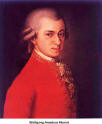|
These words by Hugo von Hofmannsthal
describe Salzburg best: “Land Salzburg, in the heart of the
heart of Europe. It lies halfway between Switzerland and the
Slavic countries, halfway between the northern Germany and the
Italian Lombardy; in the middle between South and North, between
mountains and the plains, between the Heroic and the Idyllic; it
is an edifice situated between urbanity and countryside, between
the
 ancient and the modern, the baroque magnificence and the
eternally rustic; Mozart is the precise expression of all of
these. Central Europe has no fairer place!” ancient and the modern, the baroque magnificence and the
eternally rustic; Mozart is the precise expression of all of
these. Central Europe has no fairer place!”
Records indicate signs of settlement already before 400 b.c. in
the centre of today’s city, Illyrians and Celts already
prospected for copper, gold and salt, the Romans established
their community in today’s “old city” and called it “Juvavum”,
which reached its zenith 200 a.d.
Naming the city is recorded in the “Gasteiner Chronic” in 1540:
“the city was before called Helffenburg, but since salt was
mined in Hallein, the Archbishop renamed it Salzburg”, which
name has remained unchanged”. The establishment of the town of
Salzburg as we know it today can be precisely traced to the year
696 when the missionary St. Rupert arrived in the area and
founded the Benedictine Monastery of St. Peters. The town merged
into an independent church state, ruled by a sovereign, the
Archbishop. He was not only the spiritual leader but also
possessed many worldly powers. The organization of the city was
in a Vatican-like style and Salzburg was not called the “Rome of
the North” without foundation.
The city of Salzburg is nestled between two mountains,
Kapuzinerberg and Mönchsberg and the River Salzach. It is a
picturesque city with small alleyways, quaint colourful town
houses, rich castles and palaces, with exquisitely styled
gardens and beautiful fountains, magnificent churches and
monasteries. The Festung Hohensalzburg, a 900 year old fortress
which is considered the best maintained medieval fortress in
Europe, sits like a crown above the city. The many churches in
the Gothic and Baroque (at least five by Fischer von Erlach)
styles attest to the wealth and power of the Archbishops and the
Roman Catholic Church, wealth gained from gold from the Hohe
Tauern and salt from Hallein and the Salzkammergut.
Salzburg is most certainly a city of music, it was the home and
birthplace of Wolfgang Amadeus Mozart and the memorial to him at
the Salzburg Mozart Square honours the city’s most famous son.
While Salzburg has a long history as a popular destination for
musicians, supported and sponsored by the many Archbishops of
the past, the city has retained its charm and character through
the centuries. Today it is most famous for the Salzburg Festival
which was inaugurated on August 22, 1920 when Hugo von
Hofmannsthal’s morality play “Jedermann” was premiered on the
Domplatz, directed by Max Reinhardt. Interrupted by WWII, it was
nothing short of a miracle when only three months after the end
of the war, when the wounds caused by the war were still open
and raw, the Festival took place again in the Summer of 1945,
with the support of the American occupying forces. Since then
the Salzburg Festival has established itself as the most
important festival for opera, drama and concerts. “Jedermann” is
still performed every year on the Domplatz, where the backdrop
of the facade of the big cathedral and the gathering shadows in
the late afternoon add to the theatrical power of the iconic
play.
Salzburg’s most recent claim to fame comes via Hollywood in the
form of “Sound of Music”, the story of the von Trapp Family,
which has played to millions of viewers and theatre goers around
the world and which has again reinforced the city’s attraction
as a tourist destination.
|
|